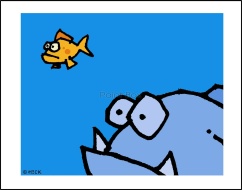A framed artwork helps to protect your artwork from environmental conditions and will visually enhance your art or painting. Frame give a complete touch to your painting and make it glorious and attractive. There are also practical and economical considerations which the artist must remember a framed paintings are sold more easily and quickly than an unframed one.
Framing your painting requires both good selection and some basic framing knowledge to ensure proper safety of your artwork. Your personal taste is called upon when choosing the shape, size and color of the frame and mat. The more knowledge you have about conservation and the environmental hazards, the better you will protect your artwork from it.
This days people are found of having paintings for their home decor, they demand an attractive look for the paintings. This look is only possible through applying frame on your paintings, frames which have traditional look are more eye catching as they are crafted with hand crafted designs.
There are various types of frames available nowadays, which has enlarged the choice of people and helps to get the best combination for their choice.
1) Frame
Frame is a very basic platform of the whole framing process. A frame can have different type, shape, size and color. Wooden frame, Metal frame, plastic frame and glass frame are basic types of frames. Shape consist of a box (square or rectangle), oval, circle, triangle and so.
2) Mat Board
Utilizing a mat will creates a professional looking artwork at a low cost and supports the fine art while protecting it from touching the glass. Quality mat boards which are acid-free should be used as it will protect your artwork getting damaged from dust and other atmospheric particle. It’s up to you to decide whether you want to frame art with a plain, colored or textured mat. Generally, artists use plain white mat with art as it gives more glove to your art.
3) Attaching Art Work
After Cutting mats the next step is attaching your artwork. While attaching art work keep in mind by using acid-free tape for fixing art and hold it in place. When you frame artwork, tape the art to the back of the mat board.
4) Frame your art behind an acrylic or glass surface.
It’s with you that you want your artwork on acrylic or on glass surface select the best suitable for your art. Acrylic is a better insulator and much lighter than glass. It is also shatterproof. However, acrylic can cause static electricity, so never place charcoal and pastel artwork behind it. Cost of glass is less as compared to acrylic, but it can create a glare.
5) Fix glass in the frame.
The mat with your art will be fixed beneath the glass. Fix the glass with the frame and cleaning the inner glass with a soft liquid and make it ready for the final stage.
6) Seal it with backboard.
At last seal the back with a board, the material of backboard should be acid-free so that it will protect your art for a long period of time. There is a paper between this board and mat with art, paper has been just a purpose of safety.
7) Completed
Now your art is framed completely and you may put where you want it to be. You will notice that the artwork having frame became more attractive than before.
So, at last framing is a very important for your artwork or paintings, they give a unique look to your paintings.


